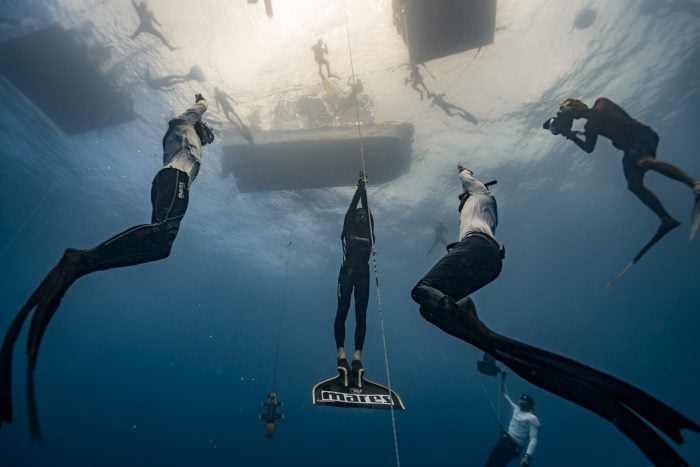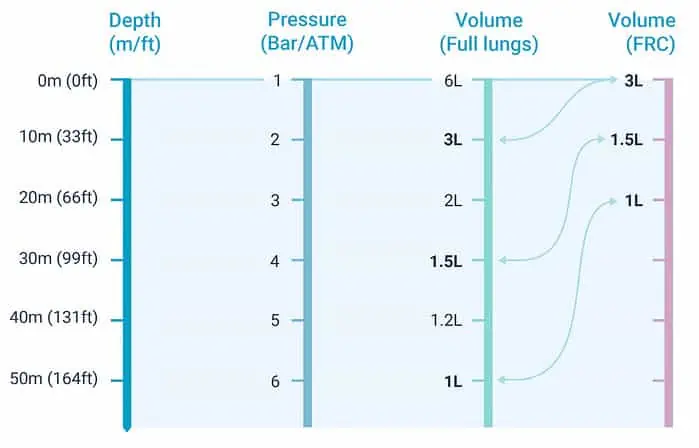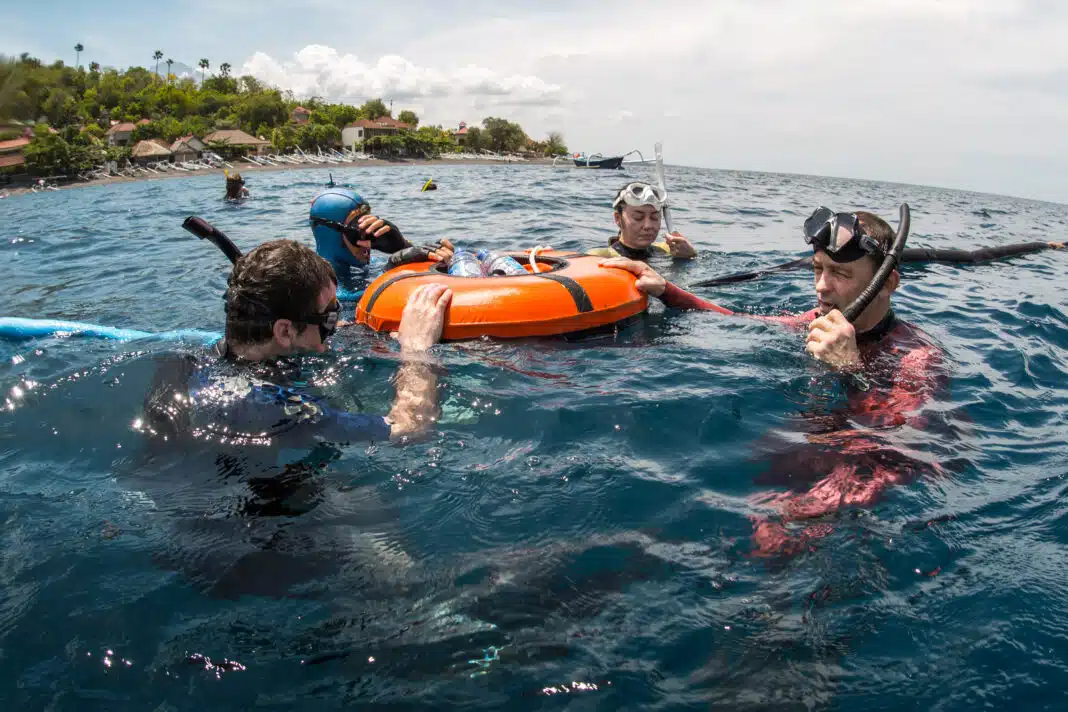If you’ve been hanging around freedivers long enough, you’ve probably heard the initials ‘FRC’ get mentioned. FRC is a term introduced in an intermediate or (usually) advanced freediving course – for a good reason, too.
FRC diving is only helpful for freedivers who can already dive comfortably to 30m/98ft and want to prepare for even deeper depths.
It is important to remember that unless you are already freediving easily to 30m or deeper, you do NOT need to incorporate FRC dives into your training.
If you’re diving shallower than 30m and want to go deeper, your objectives are to relax, enjoy, and continue progressing depth safely.
But if you already go 30m or deeper and want to know more about FRC and what it means to your freediving, this 3-part guide is here to cover some finer theoretical points.
Note that freedivers should ONLY attempt their first FRC dives and training under the guidance of a qualified freediving instructor or coach. FRC dives can result in serious injuries if not approached correctly and safely. Self-learned FRC diving through articles or videos is NOT recommended.
Now that we got that out of the way, let’s get started.
What exactly is FRC?

FRC stands for functional residual capacity, a measurement of a specific amount of air in the lungs.
If we take a deep breath and hold it, that’s called our total lung capacity (TLC). TLC in an average adult is about 6 liters, with biological males tending to have a greater TLC than biological females.
FRC is approximately 50% of your TLC – in other words, it’s the air that remains in your lungs after a passive exhale. A passive exhale is defined as taking a breath and letting the air flow out of your lungs naturally without activating any breathing muscles (if muscle activation occurs, it is a ‘forced’ exhale).
When you hear freedivers talking about FRC diving, they mean that they take a full breath and then passively exhale before they dive. People might also refer to FRC dives as ‘half-lung’ since freedivers normally dive with full lungs.
Some freedivers may also mistakenly call them ‘exhale’ dives, but this is incorrect as ‘exhale’ dives refer to RV (residual volume) dives, which is a subject strictly for experienced, deep freedivers.
Why do some freedivers train FRC?
Residual volume, or ‘failure depth’

Let’s discuss ‘failure depth.’
Many freedivers hit a roadblock between 30-40m (98-131ft) because those depths are where we reach residual volume (RV, another lung measurement).
Residual volume is the air in the lungs after a full (forced) exhalation.
In untrained adults, RV is usually about 25% of their TLC, while freedivers can train to reduce their RV to about 20% of their TLC. The depth where you reach RV is also called a ‘failure depth’ because it is where normal equalization (Frenzel) would fail.
So if you are an average human, you’ll reach RV at 30m (98ft). And if you want to train to go deeper? You could theoretically repeatedly dive to 30m or more to train ‘deep.’ However, this can be tiring and build up too much nitrogen if surface intervals aren’t respected. But if you dive FRC, you can reach RV at 10m (33ft) instead. But why is that?
Boyle’s Law revisited
Do you remember Boyle’s Law, which states that ‘at a fixed temperature, the volume of a gas is inversely proportional to the pressure exerted by the gas?’
Let’s say you’re an average human with a TLC of 6 liters. According to Boyle’s law, at 10m (33ft), the ambient pressure that surrounds you is 2 bar, which reduces your lungs to ½ of their volume (3L). This continues the deeper you dive, where the ambient pressure around you increases. So if your RV is 25% of your TLC (1.5L), you would reach failure depth at 30m (98ft), which is 4 bar.
But if you dive FRC, which is only 50% of your TLC (3L), you would reach RV much quicker. In fact, you would reach it at only 10m (33ft) since your RV is still at 1.5L.
See the graphic below for a visual.

Train depth without going ‘deep’
Diving FRC means you can train to increase your failure depth repeatedly without reaching 30m (98ft) or deeper. This comes in handy when you become a 40m+ (131ft) freediver and repeated dives to depth become limited (or nonexistent – 60m+/197ft divers can only perform one deep dive a day)! It’s also beneficial when depth is limited.
Not only will your body thank you for avoiding exposing it to too much nitrogen build-up (which can result in decompression sickness), FRC diving means you can repeatedly practice things like deep equalization, training lung flexibility, and maintaining relaxation at depth.
What’s next?
In Part 2 of our Complete 3-Part Guide to Understanding FRC in Freediving, we’ll detail the benefits of FRC dives and why you might want to incorporate them in your training sessions.
Stay tuned!
Additional Contributions from Apnea Bali

